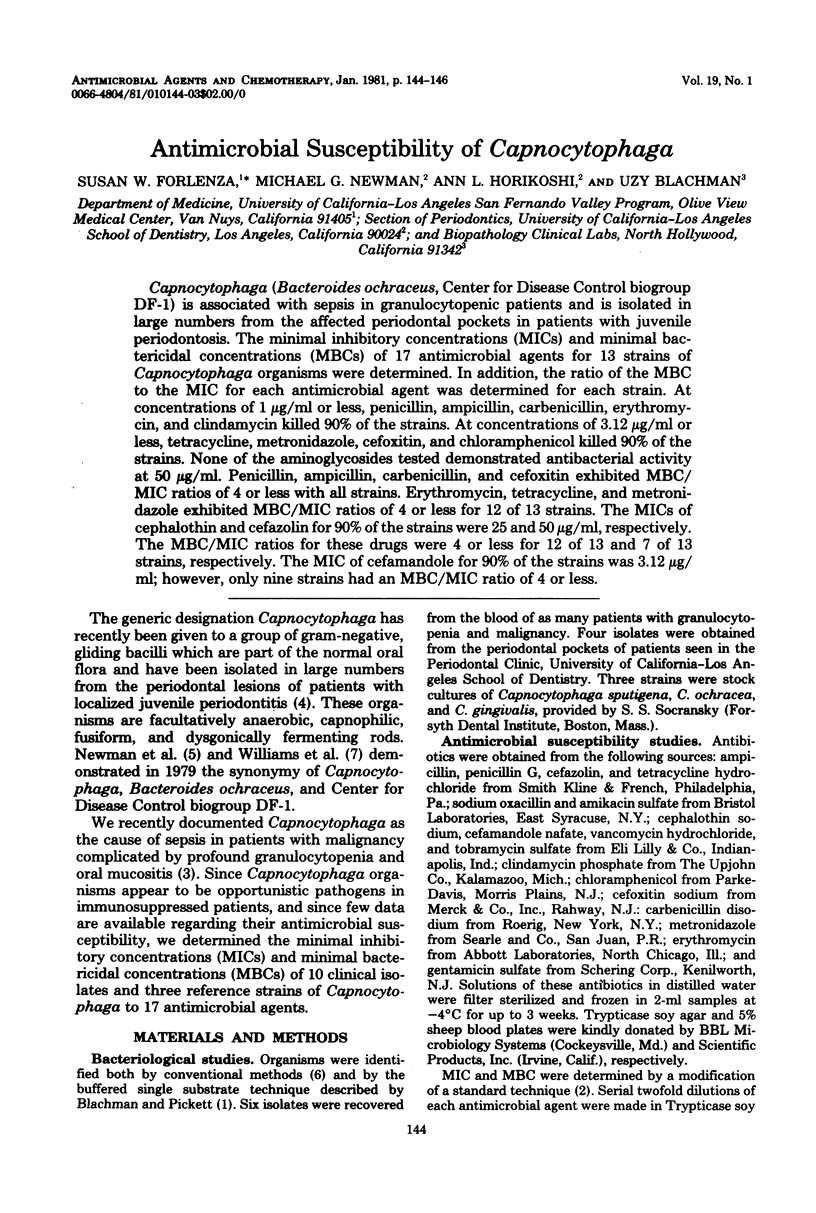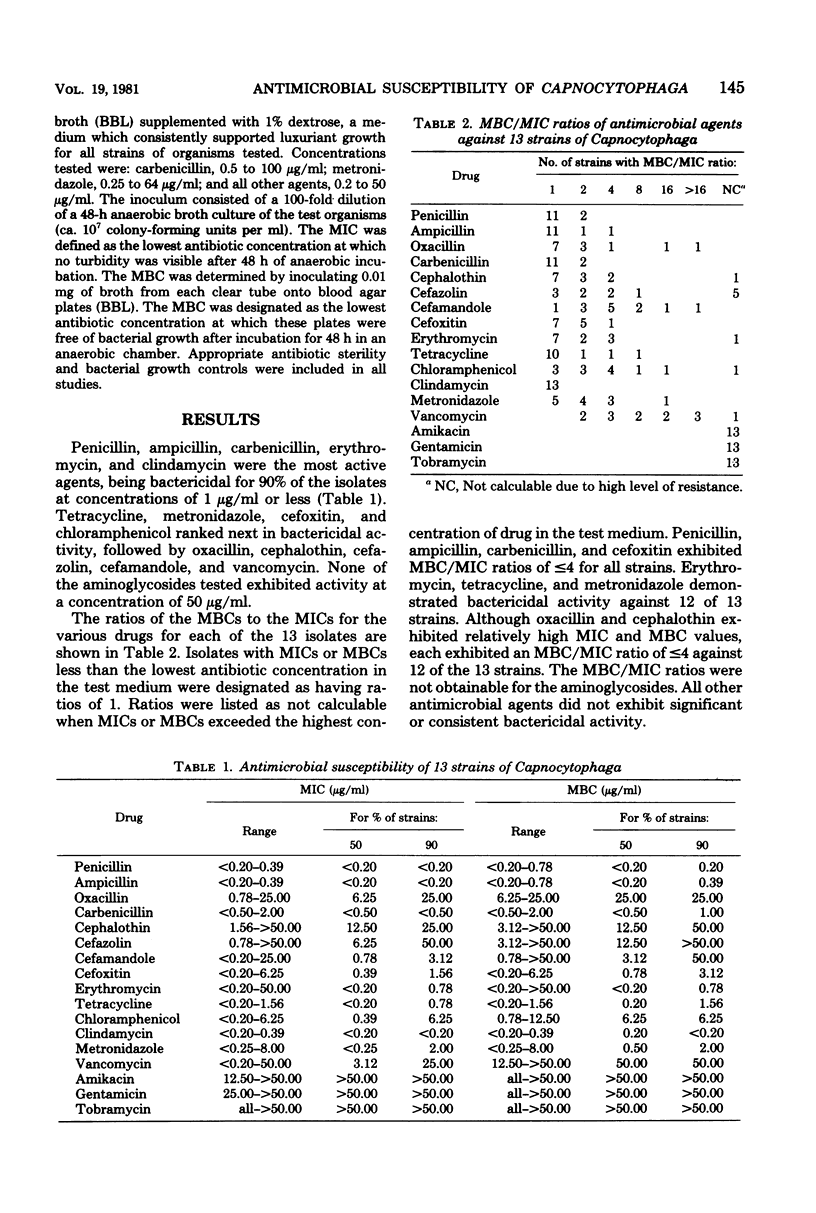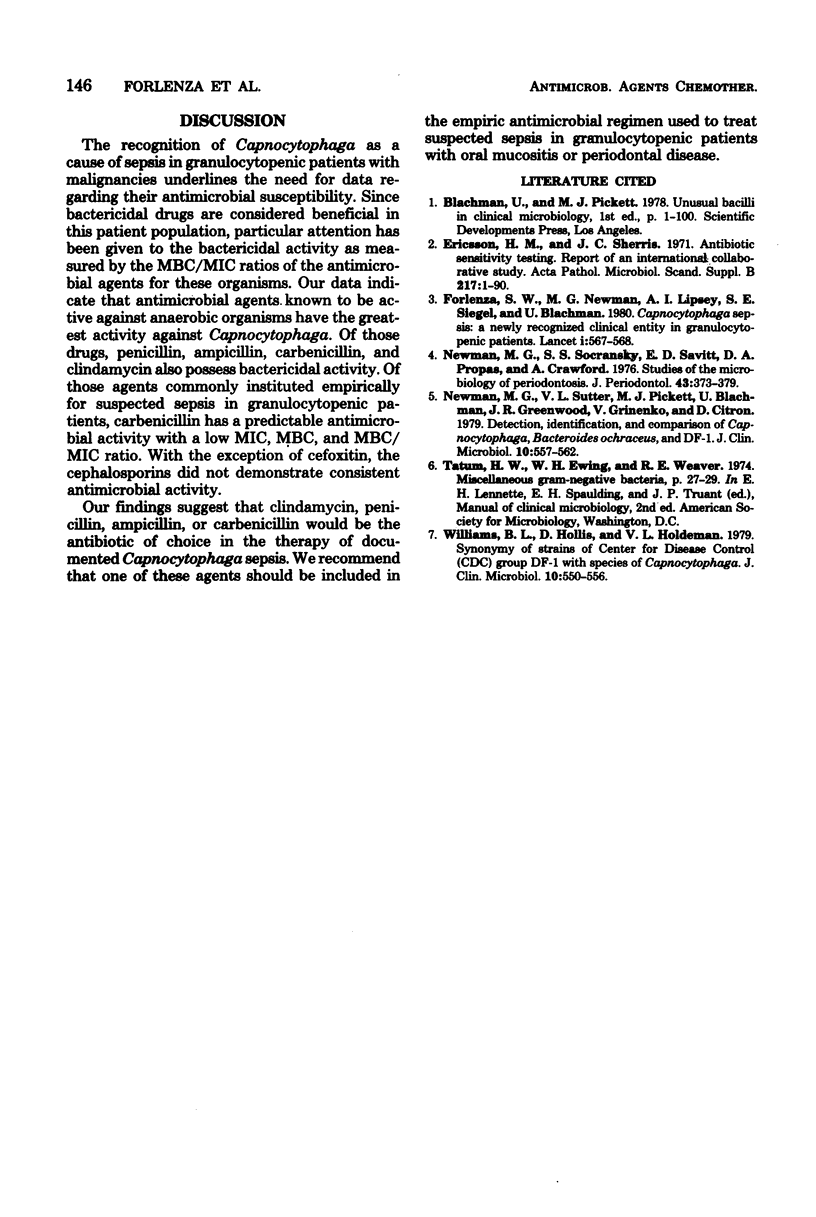Abstract
Capnocytophaga (Bacteroides ochraceus, Center for Disease Control biogroup DF-1) is associated with sepsis in granulocytopenic patients and is isolated in large numbers from the affected periodontal pockets in patients with juvenile periodontosis. The minimal inhibitory concentrations (MICs) and minimal bactericidal concentrations (MBCs) of 17 antimicrobial agents for 13 strains of Capnocytophaga organisms were determined. In addition, the ratio of the MBC to the MIC for each antimicrobial agent was determined for each strain. At concentrations of 1 microgram/ml or less, penicillin, ampicillin, carbenicillin, erythromycin, and clindamycin killed 90% of the strains. At concentrations of 3.12 microgram/ml or less, tetracycline, metronidazole, cefoxitin, and chloramphenicol killed 90% of the strains. None of the aminoglycosides tested demonstrated antibacterial activity at 50 microgram/ml. Penicillin, ampicillin, carbenicillin, and cefoxitin exhibited MBC/MIC ratios of 4 or less with all strains. Erythromycin, tetracycline, and metronidazole exhibited MBC/MIC ratios of 4 or less for 12 of 13 strains. The MICs of cephalothin and cefazolin for 90% of the strains were 25 and 50 microgram/ml, respectively. The MBC/MIC ratios for these drugs were 4 or less for 12 of 13 and 7 of 13 strains, respectively. The MIC of cefamandole for 90% of the strains was 3.12 microgram/ml; however, only nine strains had an MBC/MIC ratio of 4 or less.
Full text
PDF


Selected References
These references are in PubMed. This may not be the complete list of references from this article.
- Forlenza S. W., Newman M. G., Lipsey A. I., Siegel S. E., Blachman U. Capnocytophaga sepsis: a newly recognised clinical entity in granulocytopenic patients. Lancet. 1980 Mar 15;1(8168 Pt 1):567–568. doi: 10.1016/s0140-6736(80)91057-0. [DOI] [PubMed] [Google Scholar]
- Newman M. G., Socransky S. S., Savitt E. D., Propas D. A., Crawford A. Studies of the microbiology of periodontosis. J Periodontol. 1976 Jul;47(7):373–379. doi: 10.1902/jop.1976.47.7.373. [DOI] [PubMed] [Google Scholar]
- Newman M. G., Sutter V. L., Pickett M. J., Blachman U., Greenwood J. R., Grinenko V., Citron D. Detection, identification, and comparison of Capnocytophaga, Bacteroides ochraceus, and DF-1. J Clin Microbiol. 1979 Oct;10(4):557–562. doi: 10.1128/jcm.10.4.557-562.1979. [DOI] [PMC free article] [PubMed] [Google Scholar]
- Williams B. L., Hollis D., Holdeman L. V. Synonymy of strains of Center for Disease Control group DF-1 with species of Capnocytophaga. J Clin Microbiol. 1979 Oct;10(4):550–556. doi: 10.1128/jcm.10.4.550-556.1979. [DOI] [PMC free article] [PubMed] [Google Scholar]


